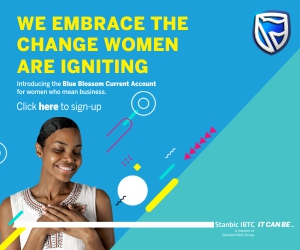GRTech
Red Star Express announces its Rights Issue Offer at NSE


Nigeria’s leading logistics provider, Red Star Express Plc, has declared its Right Issue to existing shareholders as a way of raising fresh capital.
The provisional allotment of 336,855,291 ordinary shares of 50 Kobo each on the basis of four (4) new Ordinary shares for every existing seven (7) Ordinary shares held at N4.00 per share has been announced for the company’s shareholders.
This announcement was made known to shareholders at the 2018/2019 Facts Behind the Figures Business Review at the Nigerian Stock Exchange Market, in Lagos.
According to the presentation by the company, the offer opened on Monday November 11th 2019 and will close on Wednesday December 18th 2019.
The proceeds of the issue thereafter will be used to finance the expansion of the company’s current operations, deploy more improved technology and increase the working capital in line with the business requirements.
Some of the projects the proceeds will be used for include, Construction of the Cargo Processing Warehouse, Truck Bay & Workshop @Lagos-Ibadan Expressway, and the 9000 sqm space-fenced &available for warehouse development along Lagos-Ibadan Expressway, Group ICT improvement/Enterprise Resource Planning Solution, amongst others.
In furtherance to this, the company pointed out that at the presentation that all Ordinary shares that are not taken up by December 18th 2019 will be allotted to a pro-rata (equal) basis to shareholders who applied and paid for additional shares over and above their provisional allotment.
Accordingly, the shareholders who do not accept their allotment in full may have their shareholding in the company diluted.
The Group Managing Director, Dr. Sola Obabori, reiterated the company’s profit as at 2019, and the sole aim of raising capital through the Right Issue Offer.
“Our company’s revenue grew by 20% from N8.4billion in FY 2018 to N10billion in FY 2019 as a result of our consistent increase in revenue base, through increase in customer base, innovation and investment in assets.
“Gross profit declined by 0.2 % from N2.782billion in FY 2018 to N2.776billion in FY 2019 due to slightly higher cost of sales. PBT also increased by 22% from N610million in FY 2018 to N743million in FY 2019. This is attributable to our stringent cost management approach in our business operations. However, the additional capital is to accentuate the growth potentials already put in place by the company’s management.
“This move underlines our ambition to maintain the expansion activities undertaken in the last few years. After opening international offices in Niger Republic, Burkina Faso and Benin Republic, we have established new business lines in the Agricultural and Technological sectors of the economy. This Right Issue represents the next logical step in this regard,” he stated.
“We have a promise to keep towards our shareholders; which is to continue providing superior returns on their investment in our business. With this additional capital, we will be able to ensure considerable growth of the company; making it more profitable and in a position to continue fulfilling that promise (of providing superior returns). I, on behalf of Red Star Express Plc., I appeal to all stakeholders not to relent in their support for the company but rather give in their maximum co-operation for its growth.” he added.
Speaking on this, the Chief Executive Officer (CEO), Nigerian Stock Exchange, Mr Oscar Onyema, expressed his satisfaction from the presentation made by Red Star Express Plc. “NSE is pleased that Red Star is using this platform to inform their stakeholders of their performance in the year. We encourage more excellent performances”.
FBN Quest Merchant Bank Limited is the lead issuing house for the Rights Issue while Meristem Capital Limited is involved as the joint issuing house.
Red Star Express Plc is a Licensee of Federal Express (FedEx) Corporation, the world’s largest delivery solutions provider.
The company has over 150 offices nationwide, with a network reach spanning over 1,500 communities in Nigeria and over 200 countries worldwide.
It is made up of 4 subsidiaries specializing in areas such as Express Delivery, Logistics, Freight, Outsourcing services, Supply Chain Management, E-Commerce Logistics Solutions, Printing and Packaging, E-Archiving, Business Enterprise Solutions, as well as Agro Logistics and Trade.
-



 GRTech2 days ago
GRTech2 days agoSoludo Sets Pace for Tech-Led Governance as Anambra Deepens AI and Data Adoption, says Chukwuemeka Fred Agbata
-



 GRTech3 days ago
GRTech3 days agoAt AfriTech 5.0, Tizel CEO Advocates Homegrown Cybersecurity Intelligence
-



 GRTech7 hours ago
GRTech7 hours agoGlobacom Expands Spectrum, Clears Congestions and Achieves Seamless Digital Connectivity
-



 News6 hours ago
News6 hours agoIPI Nigeria to Immortalise Late Treasurer Rafat Idris with University Endowment Prize








